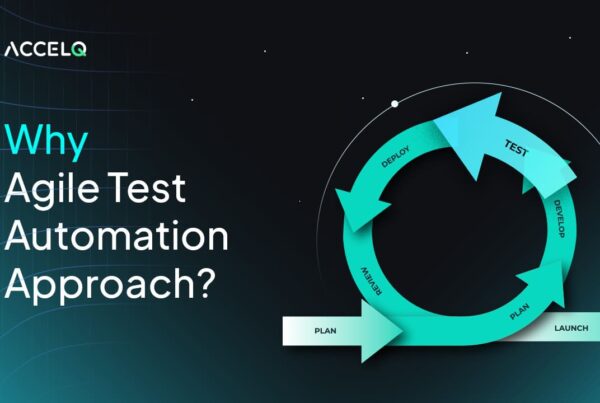Role of Observability and Controllability in Software Testing

Observability becomes more relevant in the face of the demands of today’s application ecosystem and rapidly accelerating digital transformation. Observability helps us get deep visibility into the states of the behavior of the applications and tech ecosystems and helps us make better and quicker decisions.
Without observability, software development teams assume what behavior the production system might exhibit, potential performance bottlenecks, or future failure scenarios. The guesswork causes a waste of time in determining the cause and effect of failures, as well as how they can be solved. If customers are affected, the cost of guesswork only rises further.
Here, the observability and controllability in software testing rescue software teams by providing full visibility across the entire tech stack. It lets teams pinpoint and discover problems throughout the software, often from one application.
What is Observability in Software?
Observability in software testing refers to the ability to gain deep visibility into the internal state of applications based on three pillars:
- Logs: A record of events that trace system activity and behavior.
- Metrics: Quantitative measurements of system performance.
- Traces: End-to-end flow data that provide context on requests and transactions.
While traditional monitoring tools identify known issues, they often fall short when dealing with modern, cloud-native applications. Observability in software goes beyond monitoring by enabling teams to diagnose unknown issues using a holistic system view.
With observability and controllability in software testing, testing teams can answer complex questions like:
- Where is the system fragile?
- What are the most common points of failure?
- How can the application be optimized for better performance?
Is there a Difference Between Monitoring and Observability?
Observability and monitoring are often used interchangeably, but they serve distinct purposes:
| Feature | Monitoring | Observability |
|---|---|---|
| Definition | Measures predefined metrics and logs | Enables deep visibility into unknown issues |
| Scope | Reactive; identifies known problems | Proactive; detects unexpected failures |
| Data Sources | Metrics and predefined logs | Logs, metrics, and traces |
| Complexity | Limited to predictable issues | Handles distributed, cloud-native systems |
- Monitoring answers the question: “What is broken?” It identifies performance bottlenecks and anomalies based on preconfigured rules.
- Observability answers: “Why is it broken?” It allows teams to analyze data dynamically, enabling real-time debugging and optimization.
In a cloud-native world, observability delivers actionable insights that traditional monitoring cannot, empowering teams to shift from reactive fixes to proactive problem prevention.
Why is Observability Crucial for Software Testing?
The modern software landscape is highly distributed, with microservices-based applications, APIs, and cloud-native systems forming the backbone of applications. With rising security threats, observability has become non-negotiable for achieving high application performance and reliability.
Key Benefits of Observability in Software Testing:
1. Faster Incident Response
Observability delivers insights into abnormal behaviors, unauthorized access attempts, and system issues. By detecting issues early, teams can respond swiftly and reduce downtime.
2. Eliminates Guesswork
Observability tracks relationships between system components, variables, and failure points. Teams can identify the root cause of performance or security issues with clear, actionable insights instead of assumptions.
3. Saves Developer and Tester Time
Combining logs, metrics, and traces provides rich context that accelerates debugging. Developers and testers spend less time exploring data and more time fixing performance bottlenecks or bugs.
4. Accelerates Innovation
With real-time observability, teams can:
- Automate workflows with confidence.
- Identify potential failures early in the software lifecycle.
- Deliver more resilient and secure applications faster.
5. Faster Time-to-Market
Observability improves testing efficiency by:
- Pinpointing issues for faster resolution.
- Optimizing user experience and infrastructure.
- Aligning testing processes with business objectives for more confident releases.
According to reports, software teams using observability detect issues 2.1 times faster and achieve a 69% improvement in Mean Time to Recovery (MTTR).
How to Integrate Software Observability into Your Testing Process?
Integrating observability into testing involves a strategic approach to data collection and analysis:
- Implement Robust Logging: Track events before, during, and after operations to understand system behavior and debug faster.
- Leverage Monitoring Tools: Use real-time tools to measure metrics like response times, error rates, and infrastructure usage.
- Enable Distributed Tracing: Traces provide critical insights into request flows and system dependencies. Tools that support distributed tracing are essential for understanding end-to-end performance.
- Adopt Intelligent Test Automation: Modern platforms like ACCELQ accelerate observability by:
- Enabling continuous testing.
- Automating regression suites.
- Providing test case management and API validations.
By combining observability with continuous testing and rich test data, teams can ensure comprehensive visibility across production and test environments.
Challenges of Implementing Observability
While observability offers immense benefits, teams may face the following challenges:
- Complexity of Distributed Systems: Cloud-native applications add layers of complexity, requiring tools that support cross-environment visibility.
- Maintaining Test Automation Coverage: Ensuring comprehensive testing across APIs, devices, and microservices demands intelligent test automation tools.
- Clean, Testable Code: Writing maintainable code at scale is critical for observability success.
To overcome these challenges, software teams need platforms that provide:
- Fast, continuous testing and monitoring.
- Cross-environment API testing and governance.
- Intelligent test execution with minimal manual effort.
How ACCELQ Enhances Observability in Software Testing?
ACCELQ’s AI-powered, no-code test automation platform is designed to integrate observability into your testing process seamlessly. With ACCELQ, teams can:
- Accelerate Testing Velocity: Run automated tests across environments to detect issues early.
- Enable Rich Insights: Leverage detailed logs, metrics, and traces to pinpoint bugs or performance issues.
- Facilitate CI/CD Integration: Monitor production and test environments for anomalies.
- Optimize API Testing: Validate APIs across the entire quality lifecycle with minimal effort.
By combining intelligent test automation with observability, ACCELQ empowers teams to:
- Detect issues 2.1x faster.
- Improve MTTR by 69%.
- Deliver high-quality, robust software to market 3x faster.
Final Thoughts
The changing face of software testing with observability In an era that dictates a focus on speed and innovation in applications. At the same time, as their complexity and security challenges grow, observability must take precedence in the enterprise to ensure reliability.
ACCELQ’s intuitive testing platform takes the guesswork out, empowering teams to concentrate on providing high-performing, user-centric applications. Make observability part of your testing NOW to stay ahead of the curve!
Ready to elevate your testing process with observability?
Connect with us today to see how ACCELQ can help you build observability into your testing strategy and accelerate your software delivery lifecycle.
Prashanth Punnam
Sr. Technical Content Writer
With over 8 years of experience transforming complex technical concepts into engaging and accessible content. Skilled in creating high-impact articles, user manuals, whitepapers, and case studies, he builds brand authority and captivates diverse audiences while ensuring technical accuracy and clarity.
Discover More
 Overcoming Challenges in Cloud Testing
Overcoming Challenges in Cloud Testing
Overcoming Challenges in Cloud Testing
 Why Agile Test Automation Approach
Why Agile Test Automation Approach
































